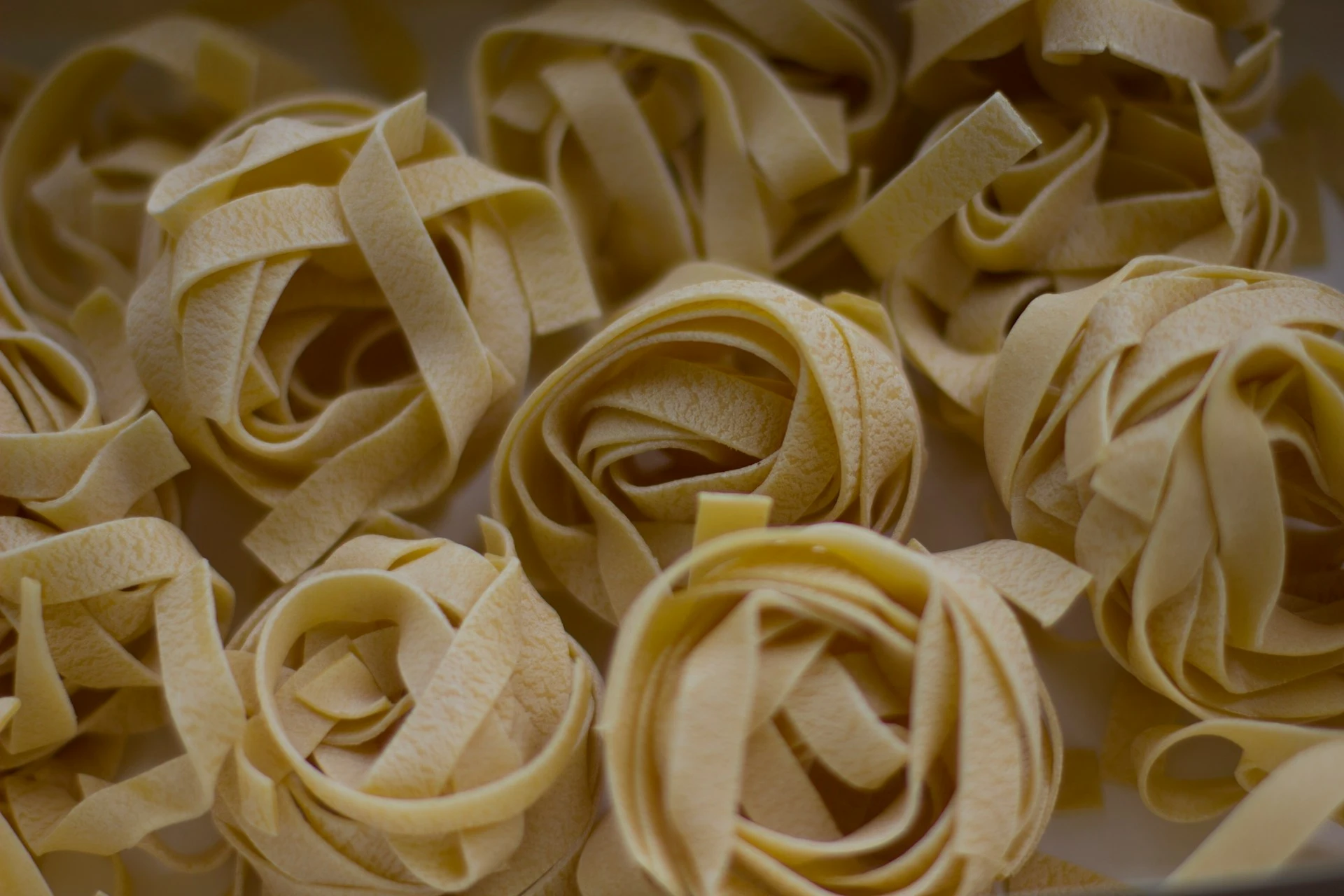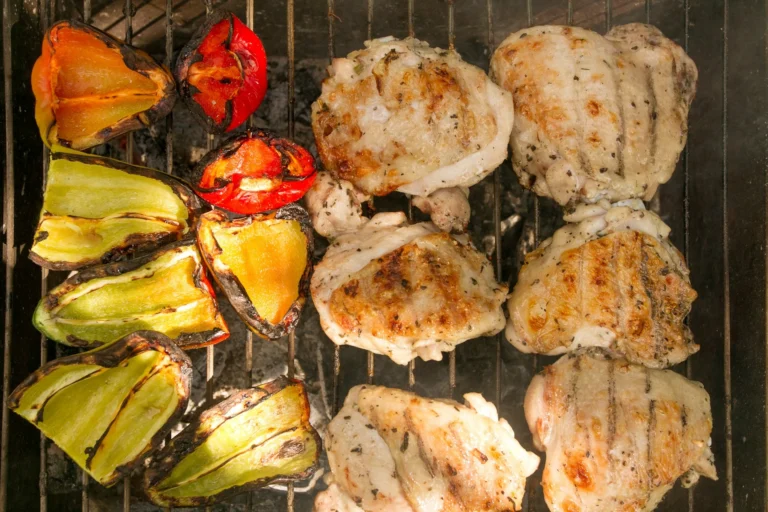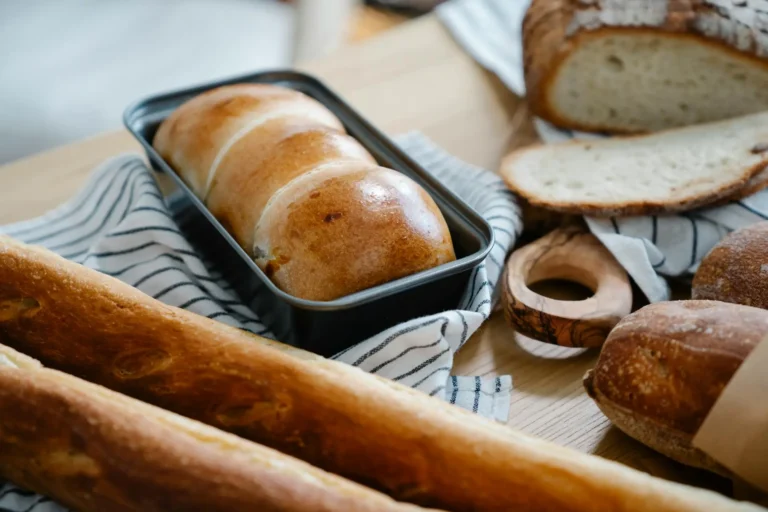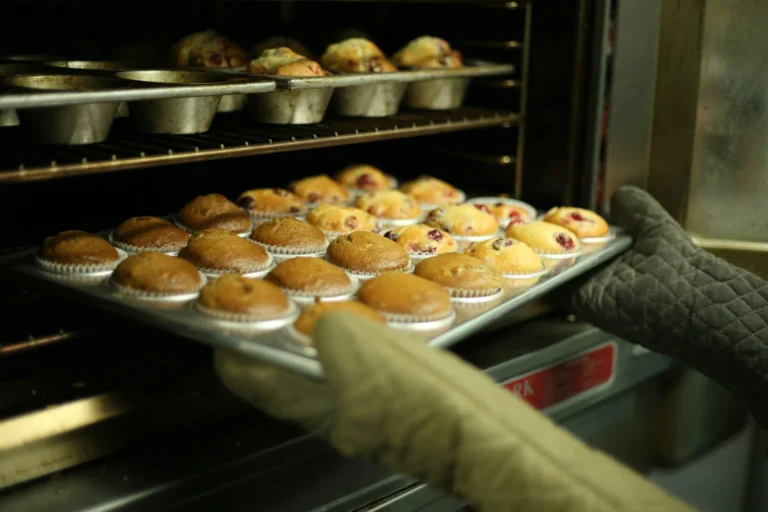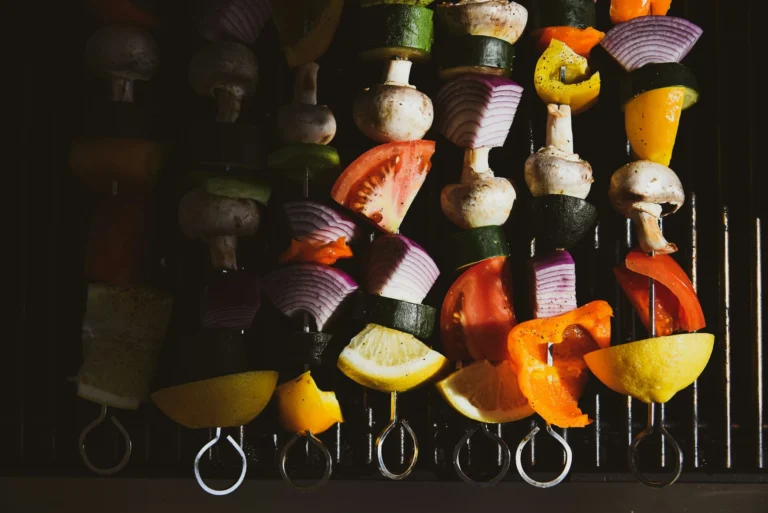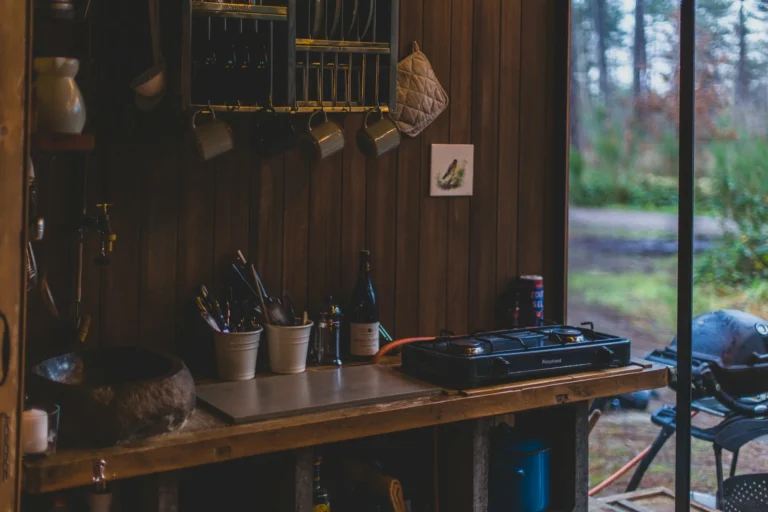Essential Pasta-Making Techniques: Homemade Pasta from Scratch
One of the most enjoyable and satisfying culinary adventures is creating pasta from scratch. The fresh pasta has a unique taste and texture that can never be replicated by those available in supermarkets. This guide will educate you on how to make pasta at home, starting with dough mixing up to noodle shaping thus guaranteeing you an impeccable homemade pasta each time.
01. Introduction to Homemade Pasta
1.1 Why Make Pasta at Home?
Packaged ones lack flavor and texture as compared to homemade pasta. Additionally, it can be personalized making it possible to experiment with various shapes and flavors.
1.2 Basic Ingredients for Pasta Dough
Flour, eggs, and salt are all that is needed to make traditional pasta dough. You can create a lot of different types of pastas using these basic components.
02. Choosing the Right Flour
2.1 All-Purpose Flour vs. Semolina Flour
It is very versatile and easy-to-use flour while semolina flour made from durum wheat gives firmer texture of noodles when used to prepare some kinds of pastas.
2.2 Mixing Flours for Optimal Texture
Using both semolina and all-purpose flours together will give your pasta’s optimal mix between softness and firmness thereby enabling it versatility during preparation stages.
03. Preparing the Dough
3.1 Measuring Ingredients Accurately
When you measure ingredients accurately, the result will always be consistent dough texture. For accurate measurements, always use kitchen scales instead of measuring cups.
3.2 Forming the Dough Ball
Place flour on a clean surface, make a well in the center, and crack eggs into the well. Stir the flour and eggs together gradually until a dough forms.
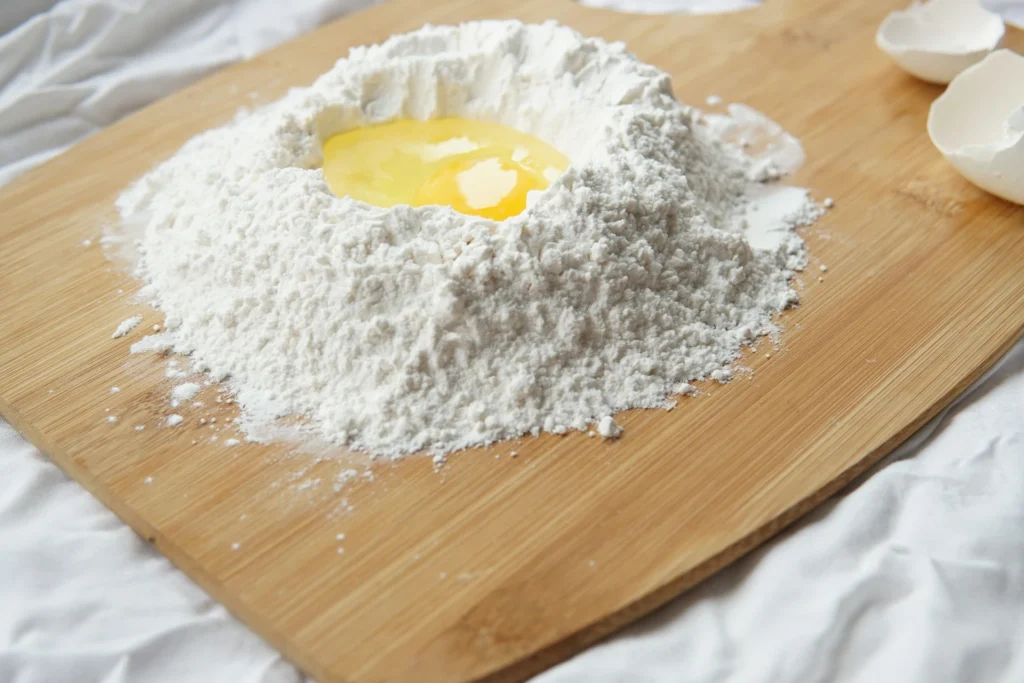
3.3 Kneading the Dough
The dough should be smooth and elastic after kneading it for roughly ten minutes. Proper kneading develops gluten, giving the pasta its structure.
04. Resting the Dough
4.1 Why Dough Resting is Important
Resting allows the gluten to relax, making the dough easier to roll out. The dough should rest for at least thirty minutes after being covered with plastic wrap.
4.2 Optimal Resting Times
For the best texture, rest the dough for 30 minutes to 1 hour at room temperature. You can also refrigerate it overnight.
05. Rolling Out the Dough
5.1 Using a Rolling Pin
Flatten the dough with a rolling pin on a floured surface. Roll it out until it’s thin enough to see your hand through it.
5.2 Using a Pasta Machine
A pasta machine simplifies the process and ensures even thickness. Start with the machine at its widest setting, then gradually reduce the thickness.
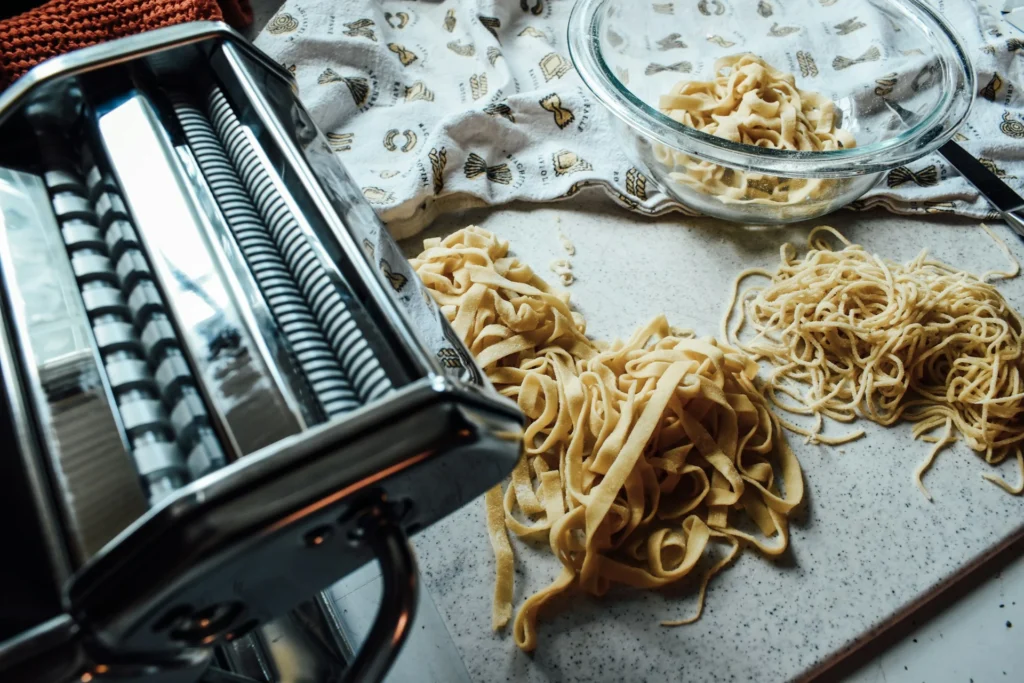
06. Cutting the Pasta
6.1 Creating Different Shapes
Apply a knife, pasta cutter or machine attachment to slice dough into different shapes. Fettuccine, tagliatelle and pappardelle are some common kinds.
6.2 Using Pasta Cutters and Attachments
Pasta cutters and attachments make it easy to produce uniform noodles. To get the best results, follow the instructions given by the manufacturer’s.
07. Drying and Storing Fresh Pasta
7.1 Drying Techniques
Dry on rack or hang over clean surface. Correct drying stops noodle stickiness.
7.2 Storing Fresh Pasta
Keep fresh pasta refrigerated for up to two days. For long-term storage, freeze pasta in an air tight container.
08. Cooking Fresh Pasta
8.1 Boiling Tips
When boiling fresh pasta put salted water in a big pot. Fresh pasta cooks fast usually 2-3 minutes.
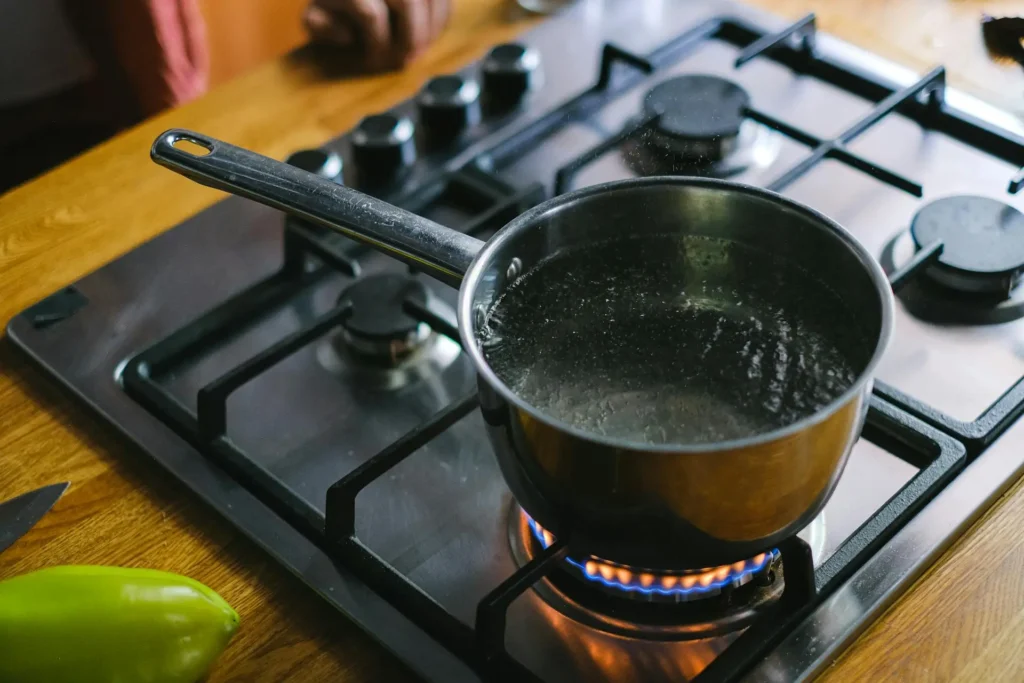
8.2 Checking for Doneness
Fresh pasta should be al dente – tender but firm when bitten. Taste a piece after 2 minutes to check for doneness.
09. Sauces to Complement Homemade Pasta
9.1 Classic Sauces
Fresh pasta goes well with classics like marinara, Alfredo or pesto sauce dishes as these recipes are simple and help bring out its taste
9.2 Creative Ideas for Sauces
Experiment with ingredients of the season and herbs to produce new sauces. Fresh tomatoes, basil and garlic can make a very simple yet flavorsome sauce.
10. Advanced Techniques in Making Pasta
10.1 Coloured Pasta
Vibrant coloured pasta could be achieved by using natural ingredients like spinach or beet juice in the dough. They also improve on taste.
10.2 Stuffed Pasta
Making ravioli or tortellini requires more expertise. Put ricotta, spinach or meat as a filler and seal the edges tightly so that there will not be any leaks.
11. Solving General Problems
11.1 Dough Sticking Together
To fix this, incorporate some flour into the sticky dough until it attains the desired consistency.
11.2 Dough Crumbing Apart
Add water, one teaspoon at a time, if it is too dry and crumbly until it sticks together.
11.3 Thickness That Is Not Uniformed
The dough should be rotated often while rolling so that thickness is even throughout. If using machines however pass them through rollers severally.
12. Healthier Alternatives to Pasta Dishes
12.1 Whole Wheat Pasta
There will be more fiber content and nuttier flavor if whole wheat flour is used. It might need more liquid as its texture is denser than those of others.
12.2 Gluten Free Pasta
Apart from rice and chickpea flours being alternatives for gluten-free pasta production, they are also delicate thus caution needed in their handling.
13. Distinctive Regional Pasta Dishes
13.1 The Italian Classical
Discover timeless Italian pasta dishes such as spaghetti carbonara, cacio e pepe, or lasagna, each area of Italy has its own unique pasta recipes.
13.2 International Variations
Pasta-making processes are found in many cultures. Make some Japanese udon or Chinese egg noodles for a global dining experience.
14. Pasta Recipes to Try Out
14.1 Traditional Fettuccine Alfredo
Ingredients:
- 1 portion of fresh fettuccine
- 1 cup whipping cream
- ½ cup butter
- 1 cup grated Parmesan cheese
- Salt and pepper to taste.
Preparation steps:
- Till al dente, boil the fettuccine in salted water.
- In a saucepan, combine the cream and butter until they melt.
- Pour the Parmesan cheese into the mixture.
- Serve over pasta with salt and pepper added to taste.
14.2 Spinach and Ricotta Ravioli Recipe
Ingredients:
- 1 portion of fresh pasta dough,
- 1 cup ricotta cheese,
- 1 cup chopped spinach,
- ¼ cups grated Parmesan cheese,
- Salt and pepper to taste.
Preparation steps:
- Roll out dough; cut into squares;
- Combine ricotta, spinach, parmesan, salt and pepper;
- Put a teaspoonful filling on every square; fold each over and seal edges;
- Cook about 3-4 minutes until they float.
15. Conclusion
Homemade pasta cooking is a rich, fulfilling act that promotes your culinary skills and personalizes your meals. If you perfect these important concepts, you will make very tasty pasta menus from scratch that family and friends will never forget. To achieve the best pasta – practice with various looks, tastes and sauces.
16. Frequently Asked Questions
01. How long should I knead the dough of my pasta?
For about 10 minutes knead the dough until it becomes smooth and stretchy.
02. Can I use whole grain flour for making noodles?
Whole grain flour can be used but because if its heavy texture more liquid may be needed.
03. How do I keep fresh pasta from sticking together?
To prevent it from sticking dry off the moistened pasta well then sprinkle some flour over it.
04. What is the best way to store freshly made pastas?
Fresh pastas can be stored in the refrigerator for up to two days or frozen for longer shelf life.
05. Can I make home made pasta without gluten?
Certainly one may use rice or chickpea four as good alternatives although this dough might turn out to be very fragile.

